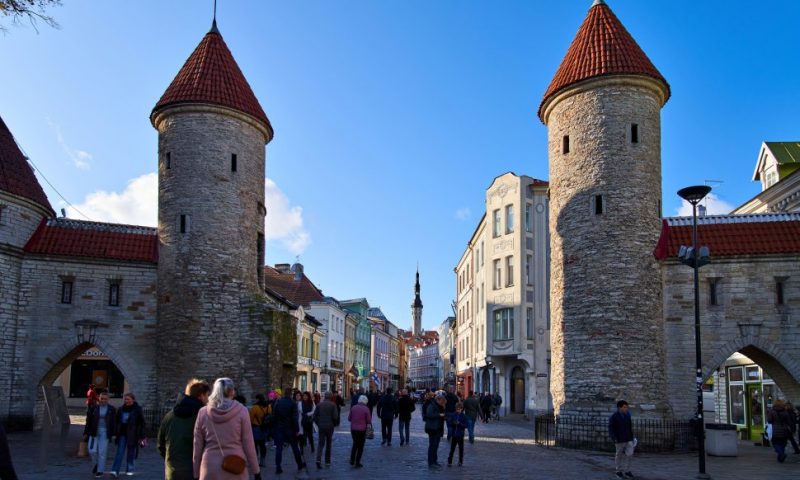Five years since the creation of the country’s e-residency program, its managing director reflects on what fueled the “the startup nation” and the challenges it faced.
IN THE EARLY 2000S, Estonia began working on becoming a digitized society easy to administer, with public services such as tax preparation and bank operations carried out online.
The Baltic nation took its initiatives another step forward in 2014 by creating an e-residency program allowing foreigners to benefit from the same perks. Companies and digital nomads opened bank accounts, created and managed their businesses online, and used the small country’s system to perform tasks remotely and take advantage of the European Union’s single market.
Estonia today has more than 55,000 e-residents from 136 countries who’ve created more than 6,000 companies.
As the program celebrated five years of existence and Estonia almost three decades of pushing for technology in a democratic world, U.S. News & World Report sat down with Ott Vatter, managing director of the country’s e-residency program, to explain what makes Estonia special and what challenges it had to overcome.
The interview has been edited for length and clarity.
What do you think makes Estonia special when it comes to technology?
I think the size (of the country) has kind of catalyzed this innovation that most other countries in the world don’t have. Most of the services available for citizens are actually online – 98% of the services. So we kind of use the digital identity, the ID card as an everyday key to our lives. If we lose our (digital) key then we are quite helpless.
What did you have in the region that helped you take the lead in technological development?
So one parallel can be the size of our country, but we were in the same situation with ex-Soviet (countries. We dealt with the same) lack of resources, lack of people, a lack of knowledge, as well. We didn’t actually know what we were getting ourselves into and we didn’t have resources to have offices all around Estonia and offer these services physically to our citizens.
And that is why we actually decided to put cable internet into schools and to teach or educate our children about the benefits of information technology. That’s where it all kind of got started with the e-Estonia basics, so to say. I don’t think that we were very different from the other countries, but we had good timing and good luck. We had to get rid of the old legacy systems that we had in place and we made the right decisions at the right time.
What are some of the projects that you are most proud of?
One of the first infrastructure projects in Estonia called the Tiger Leap, which was to (grant) internet access to public schools, I think (defined) this movement or the education of these young people who ended up creating the basis of Kazaa, Skype, TransferWise, Bolt and all of these startups that kind of replicated themselves. If there’s one success story, the financial resources and the brain capital, this success story will replicate (into) new companies. You can track today’s success stories back to the original Tiger Leap program in the 1990s. That one was the kind of founding pillar for the introduction of the digital identity in Estonia, (in the early) 2000s, which initially was obligatory to all citizens. But you couldn’t really use the (digital) card for anything practical besides physical identification.
The first ones who actually started to build on top of the digital identity were the banks, which allowed the citizens to actually use the key, as we call it, to log into (their accounts). And then the tax office came on board and other public services understood that they also have to start offering services online. Third, I’d bring up the e-residency, which is basically built on top of the Estonian ID card.
Was it hard to convince people to use this amount of technology?
I think in the Estonian case, technology has been in our core DNA for quite some time already. Of course, the beginning years were tough and people didn’t actually understand why they had to put their card into a computer to do something, but as time passed they actually understood that it’s for their benefit of saving time and money. And they appreciated the additional comfort.
With the older generation, we had special training in department stores. People would train them (on how) to use the ID card, how to plug it in, how to use PIN codes and logins for the tax authority or the bank and how to go about (everything). Of course, there are still a lot of people who go to the bank branches and the (other) branches. We can’t really discriminate – it’s their right to do (everything) on paper. But generally I would say today most of (them) are very welcoming of the technology solutions.
Is technology affordable in Estonia?
Yes. We have publicly available Wi-Fi in many places. A smartphone or a 4G (fourth-generation) connection is not expensive. We have access to public computers, as well, if (people) don’t own their own. So it’s very reachable and affordable.
How does Estonia compare to the other Baltic countries and where do you see this group heading in terms of technology?
Out of the Baltic countries, I think Estonia has been the first in a couple of innovations, but I would say that the other countries are following, as well. So it is fairly simple in Latvia and Lithuania to create a company actually, and Lithuania has said that they would come out with a residency program similar to ours in 2021. So we see that they are following our path. We have been the pathfinders.

